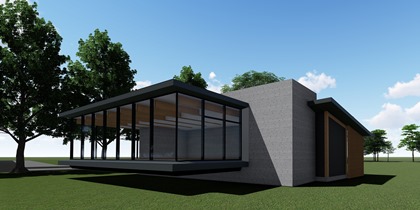 Teijin Limited will construct the world’s first building made of advanced fiber-reinforced wood (AFRW), a structural timber product comprising a number of layers of dimensioned timber and high-performance fibers bonded together with structural adhesives.
Teijin Limited will construct the world’s first building made of advanced fiber-reinforced wood (AFRW), a structural timber product comprising a number of layers of dimensioned timber and high-performance fibers bonded together with structural adhesives.
Teijin first developed the materials in 2015, and will construct the new building at the Teijin Tokyo Research Center in Hino City.
The new building exploits the warm texture and unique timber composition of AFRW to help create a stress-free environment, and also aims to realize open and comfortable space by avoiding the use of columns, thus maximizing the inflow of natural light.
The project was officially recognized as a “Sustainable Building Project” by Japan’s Ministry of Land, Infrastructure, Transport and Tourism (MLIT) this February. The structural performance of this AFRW building were certified by an independent third-party organization in May, and officially approved by MLIT in July.
Construction of the building will start in October, with technical support provided by the professional construction firm Maeda Corporation and the Structural Engineering Laboratory of Kochi University. Upon completion, Teijin and Maeda will monitor adhesive stability and the vibration durability of AFRW for a period of seven years.
Teijin will continue to develop AFRW technology following construction of this first building and the initial monitoring phase. The company expects the new technology and materials to be deployed in general construction by around 2020.
Teijin aims to contribute to the realization of safer and more comfortable wooden buildings as well as the development of sustainable architecture using timber as sustainable resources that absorb carbon dioxide. The initiatives form part of Teijin’s long-term vision to be an enterprise that supports the society of the future.
Growing demand for safer architectural construction is focusing on lightweight, highly earthquake-proof wooden structures. Wood is valued as a structural material offering warm texture and design flexibility. It also helps achieve Sustainable Development Goals or SDGs by absorbing CO2, and thereby contributing to the mitigation of global warming.
